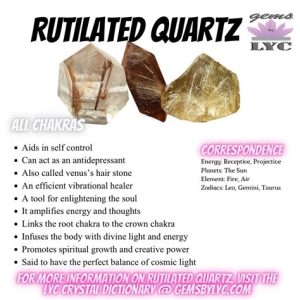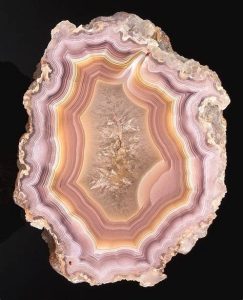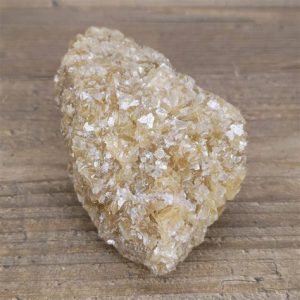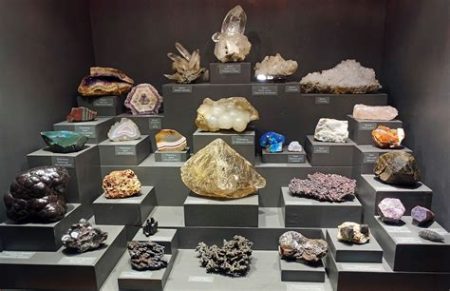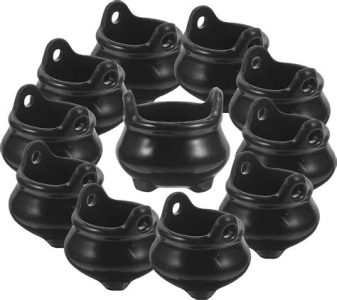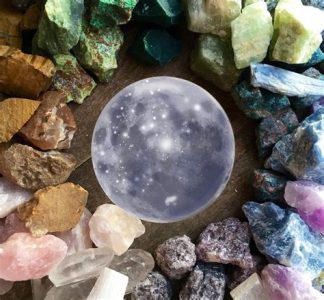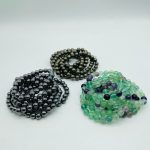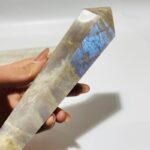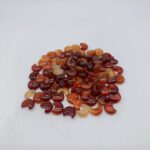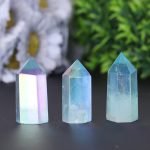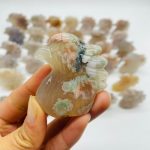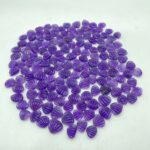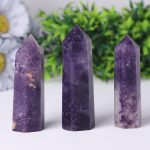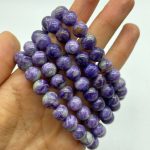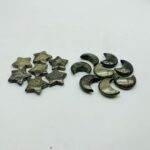Immerse yourself in the captivating world of UV reactive crystals, where ordinary rocks transform into brilliant celestial wonders under the influence of ultraviolet light. These remarkable crystals, imbued with the ability to absorb and reflect UV radiation, invite us on an unforgettable journey of discovery and inspiration.

Understanding UV Reactive Crystals
Ultraviolet (UV) radiation, a form of electromagnetic energy, lies just beyond the visible spectrum, invisible to the human eye. However, certain minerals and compounds possess the unique property of absorbing and re-emitting this energy in the form of visible light. This phenomenon, known as fluorescence, is what gives UV reactive crystals their extraordinary glow.
The intensity and color of the fluorescence depend on the specific crystal’s chemical composition and crystal structure. Some minerals, such as calcite and fluorite, exhibit strong fluorescence under UV light, while others, like apatite and scheelite, display a more subtle luminescence.
Types of UV Reactive Crystals
The realm of UV reactive crystals is diverse and ever-expanding, with new discoveries made continuously. Here are a few of the most popular and fascinating types:
- Calcite: The most common fluorescent mineral, calcite exhibits a vibrant orange or yellow glow when exposed to UV light.
- Fluorite: Known for its intense purple, blue, or green fluorescence, fluorite is a widely collected and prized specimen.
- Scheelite: This mineral, predominantly blue in color, glows with a bright yellow or white luminescence under UV light.
- Willemite: Willemite is renowned for its spectacular green fluorescence, making it a sought-after mineral among collectors and hobbyists.
- Apatite: A common mineral that can vary in color, apatite typically fluoresces in shades of green, blue, or yellow.
Applications of UV Reactive Crystals
UV reactive crystals have a wide range of applications across various industries and fields. Their unique properties make them valuable in:
- Mineral Exploration: Geologists use UV lamps to locate and identify minerals in the field, as certain minerals emit distinct fluorescence signatures.
- Forensic Science: UV reactive crystals can assist in detecting traces of blood or other body fluids at crime scenes.
- Geology: Petrologists and geologists use fluorescent microscopy to study the mineral composition and structures of rocks.
- Art Conservation: UV light can help conservators detect hidden repairs or alterations in paintings and other artworks.
- Gemology: Jewelers and gemologists employ UV fluorescence to distinguish between natural and synthetic gemstones.
Common Mistakes to Avoid
When working with UV reactive crystals, it’s crucial to avoid common pitfalls:
- Using Insufficient Light: Always ensure you have a strong UV light source to maximize the fluorescence.
- Overexposing Crystals: Prolonged exposure to UV light can damage or fade some crystals.
- Ignoring Safety: UV radiation can be harmful to the skin and eyes. Wear protective gear and avoid direct exposure.
- Not Considering Environmental Factors: Temperature, humidity, and sunlight can influence fluorescence. Control these conditions for optimal results.
- Ignoring the Needs of Customers: Businesses should consider the specific needs and expectations of their customers when offering UV reactive crystals.
Igniting New Discoveries
The realm of UV reactive crystals is a continuous source of fascination and innovation. As researchers delve deeper into their properties, new applications are emerging, inspiring countless possibilities:
Fluorescent Spectroscopy: Employing UV reactive crystals in fluorescent spectroscopy allows scientists to analyze and identify complex chemical mixtures with greater precision.
Biomedical Imaging: UV reactive quantum dots, ultra-small crystals, hold promise in biomedical imaging applications, enabling real-time tracking and visualization of cellular processes.
Advanced Lighting Technologies: UV reactive crystals can contribute to the development of novel lighting systems that emit specific wavelengths for targeted applications, such as plant growth or disinfection.
Additive Manufacturing and 3D Printing: Integrating UV reactive crystals into 3D printing processes can produce objects with unique optical properties and potential applications in optical communication or sensing.
Tables for Easy Reference
Table 1: Properties of Common UV Reactive Crystals
| Crystal | Color | Fluorescence |
|---|---|---|
| Calcite | Orange, Yellow | Strong |
| Fluorite | Purple, Blue, Green | Intense |
| Scheelite | Blue | Bright Yellow, White |
| Willemite | Green | Spectacular |
| Apatite | Green, Blue, Yellow | Variable |
Table 2: Applications of UV Reactive Crystals
| Industry | Application |
|---|---|
| Geology | Mineral Exploration |
| Forensic Science | Trace Evidence Detection |
| Art Conservation | Hidden Repair Detection |
| Gemology | Gemstone Identification |
| Medicine | Biomedical Imaging |
Table 3: Common Mistakes to Avoid with UV Reactive Crystals
| Mistake | Consequence |
|---|---|
| Insufficient Light | Weak Fluorescence |
| Overexposure | Crystal Damage, Fading |
| No Safety Precautions | Skin, Eye Damage |
| Ignoring Environmental Factors | Reduced Fluorescence |
| Neglecting Customer Needs | Dissatisfaction, Lost Sales |
Table 4: New and Emerging Applications for UV Reactive Crystals
| Application | Industry |
|---|---|
| Fluorescent Spectroscopy | Scientific Research |
| Biomedical Imaging | Healthcare |
| Advanced Lighting Technologies | Lighting Design |
| Additive Manufacturing | Material Science |

